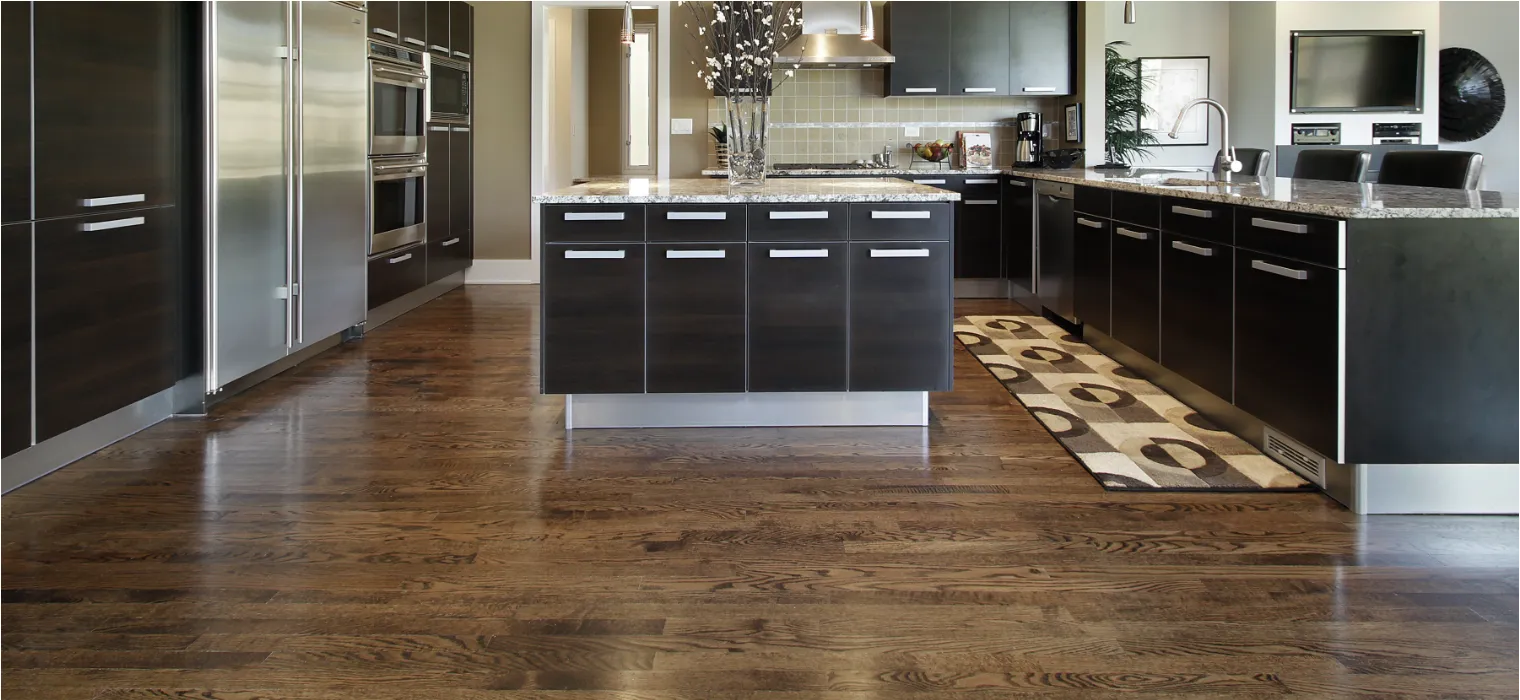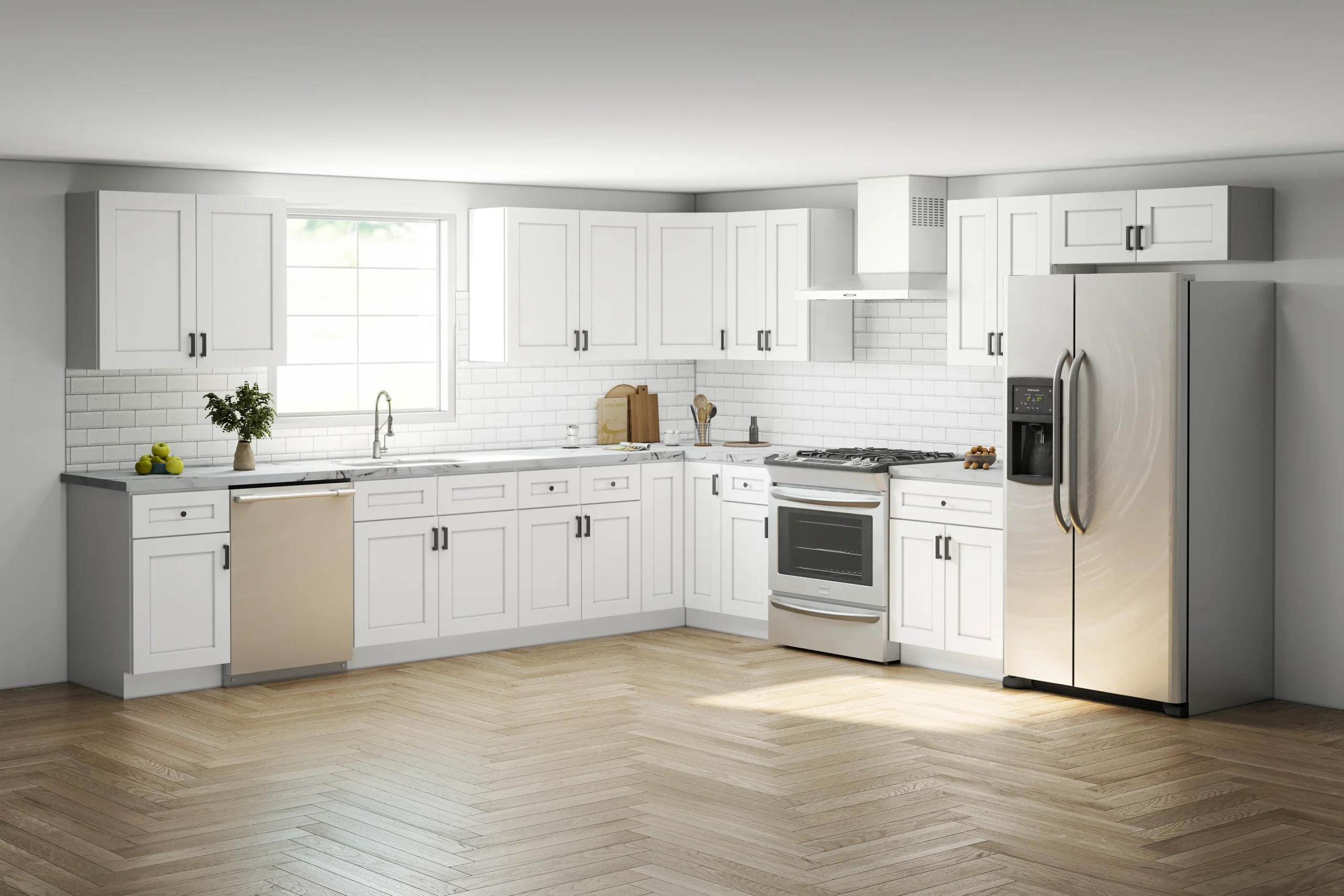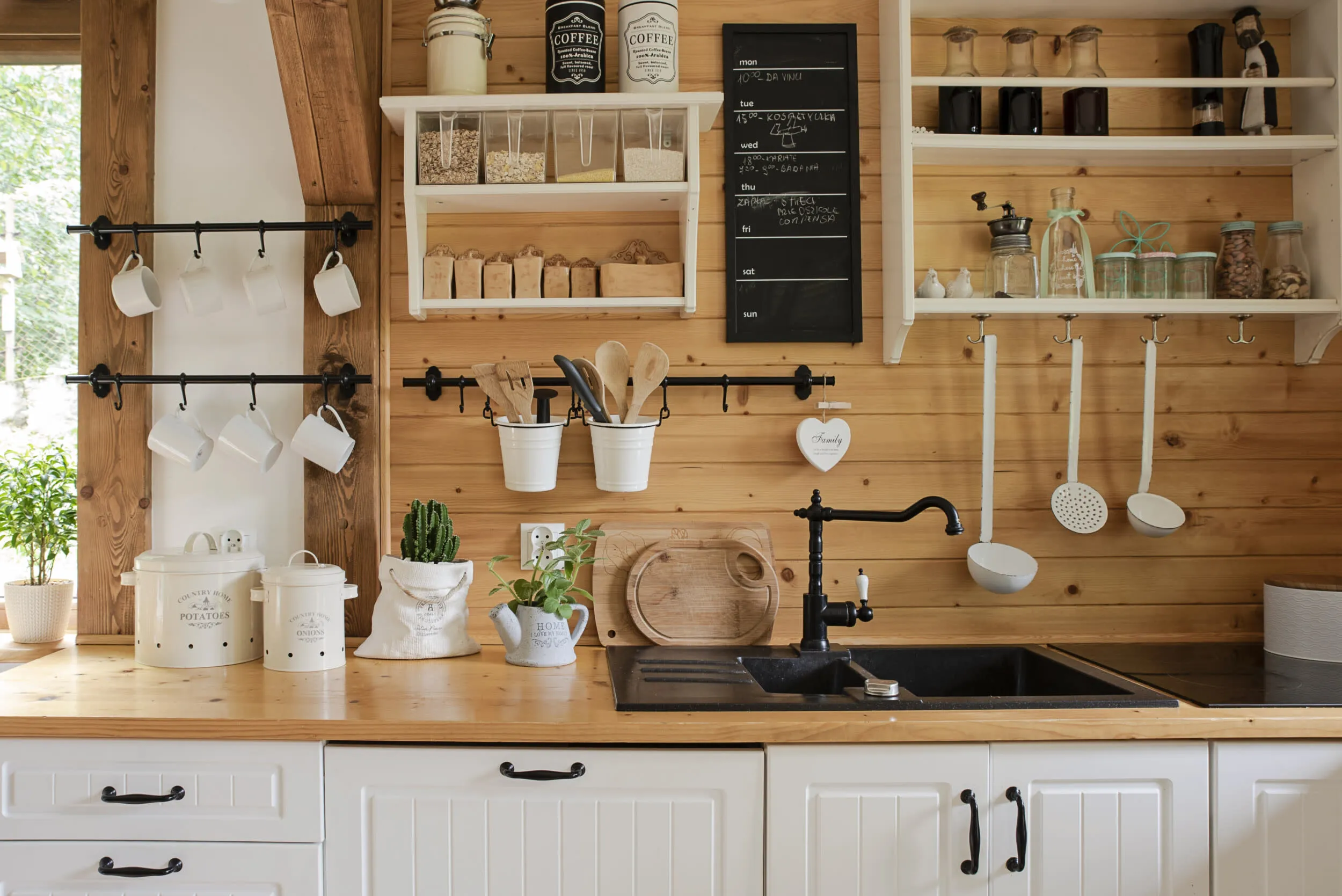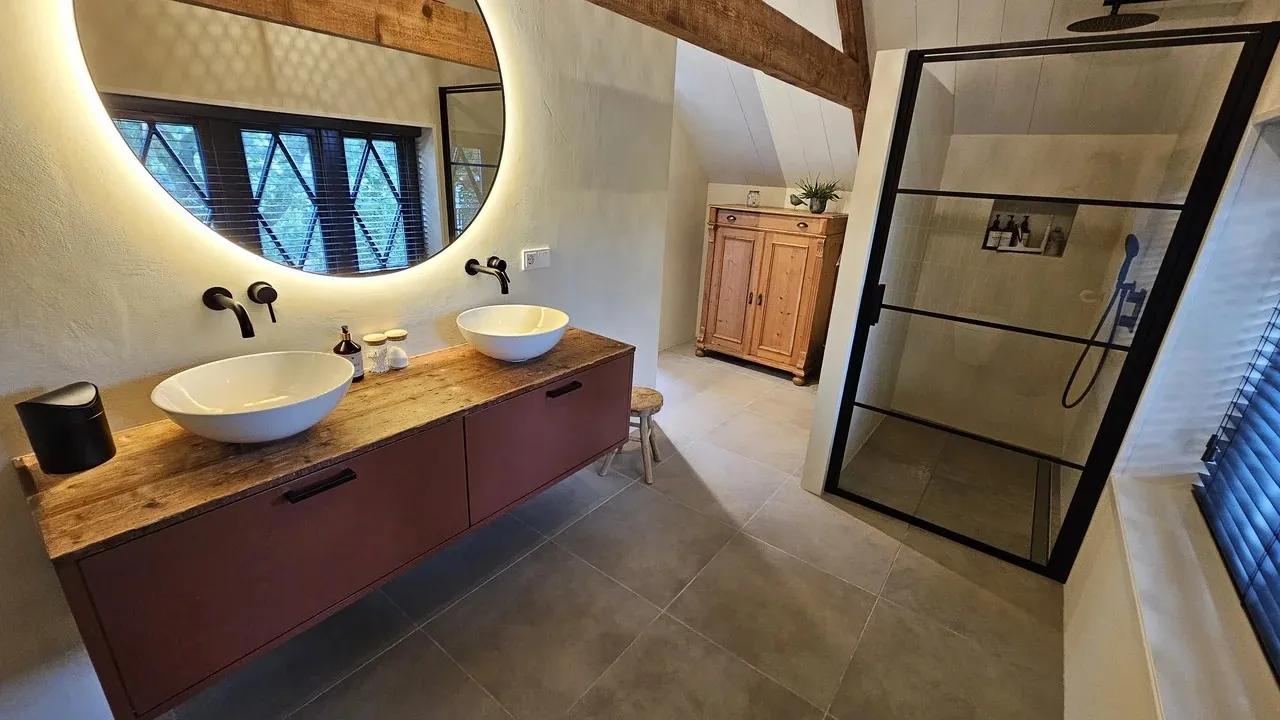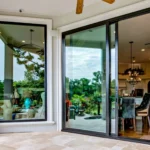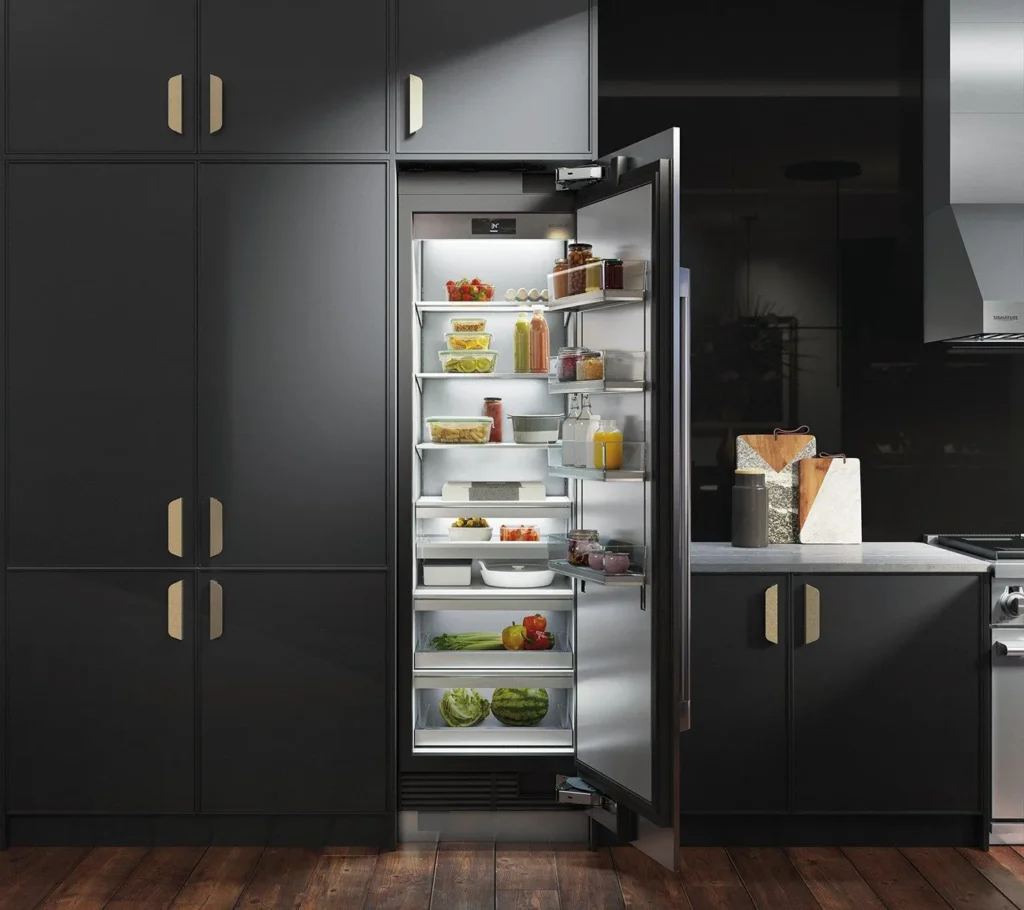
Hide the bulky box. Keep the clean line. Stop the visual noise.
A panel-ready or integrated refrigerator hides behind custom cabinet fronts. It blends with door styles, rails, and handles. You keep capacity and features, yet the room looks calmer. This guide explains options, installs, costs, airflow, and mistakes to avoid.
You want a simple path from idea to install. So we’ll move step by step: what these terms mean, how they differ, what cabinets and clearances they need, what you’ll pay attention to, and how to execute without stress.
What is a panel-ready refrigerator?
Your fridge looks like a cabinet because you attach matching panels. The appliance ships without finished doors, so cabinetmakers add fronts that match color, profile, and hardware. The body may be counter-depth to sit flush with surrounding units.
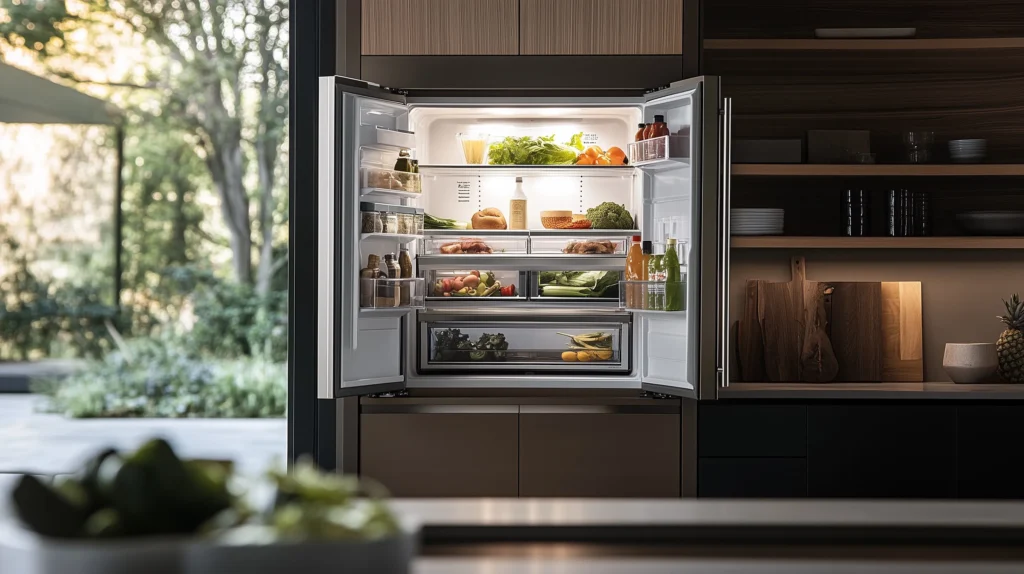
Why it matters
A panel-ready model suits modern, minimalist, and transitional kitchens. It reduces visual clutter and lets lighting, millwork, and stone do the talking. It also supports full-house matching across fridge, freezer, and dishwasher.
What to check
- The appliance must accept overlay panels.
- Hinges must support panel weight.
- Door swing and handle style must clear nearby doors and walls.
Common misconceptions
- Panel-ready and integrated are not the same. Panel-ready usually shows small reveals. Integrated aims for a fully flush face with side panels and toe-kick alignment.
Cabinet coordination
Work with the same shop that builds your doors. Ask for matching species, finish, and rail/stile layout. Confirm grain direction on tall doors.
Panel-ready vs built-in: what’s different?
Panel-ready accepts custom fronts. Built-in describes how the unit sits within cabinetry. A built-in may show its own finished doors or may also take panels. Think of “panel-ready” as the door finish option; “built-in” as the installation type.
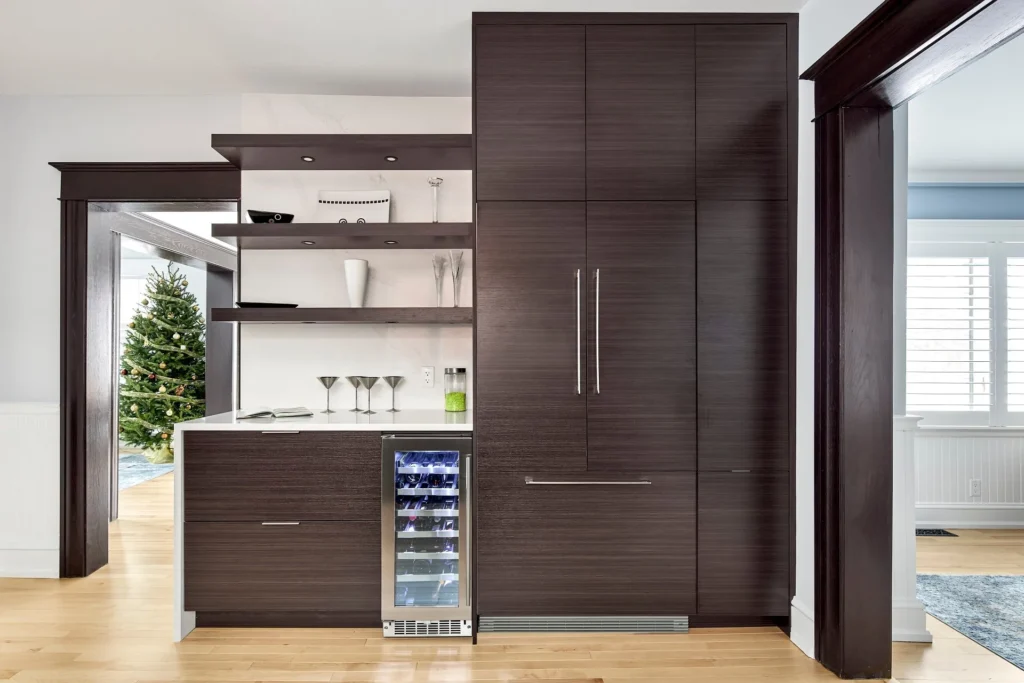
Quick comparison
| Feature | Panel-Ready | Built-In |
| Door finish | Custom cabinet panels | Finished doors or panels |
| Visual effect | Matches cabinetry | Can be proud or flush |
| Flexibility | High (style matches) | Medium (depends on model) |
| Install focus | Panel fit + hinge load | Cabinet opening + ventilation |
Fit and feel
Panel-ready often has a softer, furniture-like look if the cabinet door style is carried across. Built-ins with stainless doors create a “pro” note. Both can sit counter-depth; check specs.
Planning tip
Decide the look first, then pick the installation type that supports it. Bring a door sample to appliance shopping.
Integrated vs built-in refrigerators: which fits best?
Integrated designs aim to disappear. The face is flush with surrounding doors, side panels align, and the toe-kick runs through. Built-ins may still project slightly and read as an appliance.
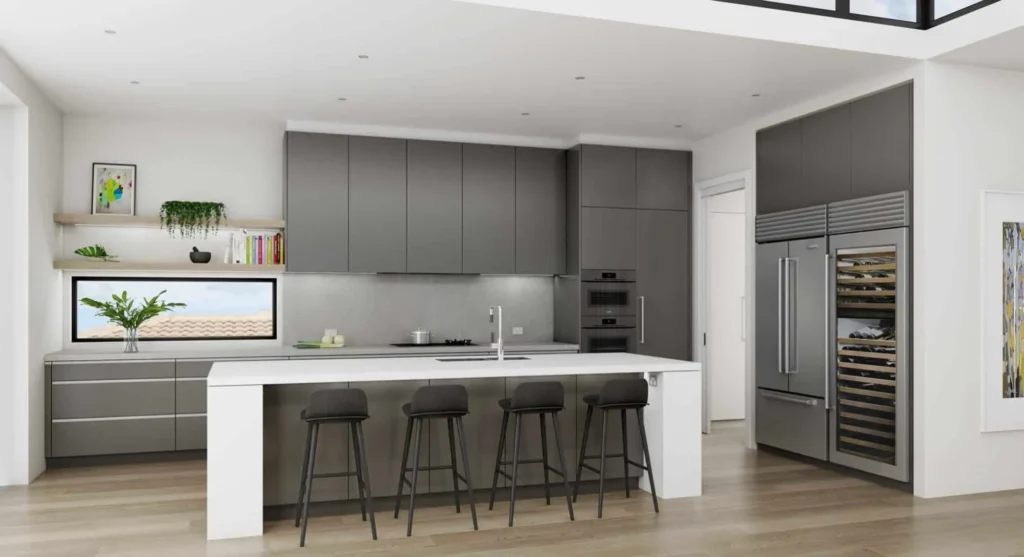
Key differences
| Aspect | Integrated | Built-In |
| Face alignment | Fully flush | Often slightly proud |
| Side treatment | Cabinet panels both sides | Cabinet case or finished gables |
| Visual read | Looks like a tall cabinet | Looks like an appliance |
| Hardware | Often discrete pulls | Often visible pro handles |
When to choose which
- Choose integrated for ultra-clean, seamless rooms.
- Choose built-in when you like visible hardware or want simpler panel geometry.
Cabinet details
Integrated needs precise panel thickness, reveal control, and perfect scribe to walls and crown. Built-in is a bit more forgiving.
Do panel-ready fridges need custom cabinets?
Yes, you need a correct opening and side support. Panels must match door thickness and hinge limits. Standard stock boxes rarely line up perfectly; plan fillers, gables, and a proper top enclosure for airflow.
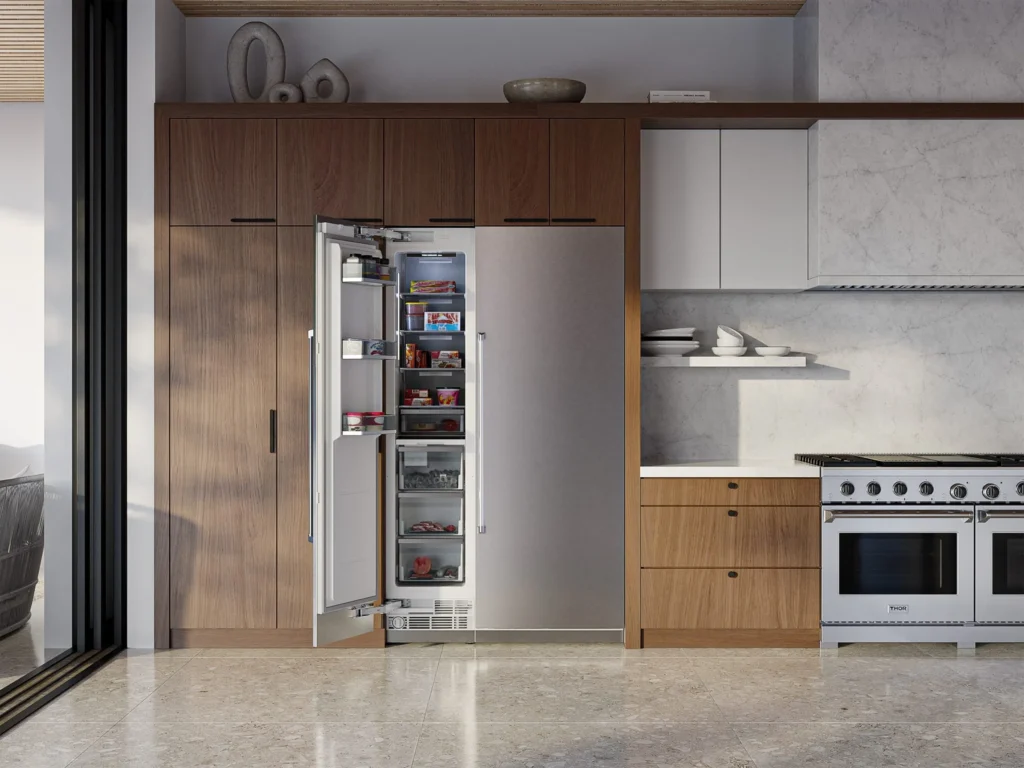
What the cabinet must provide
- Correct rough opening: Width, height, and depth from the spec sheet.
- Load-bearing sides: Tall gables can carry panel and hinge loads.
- True and plumb faces: Panels show every twist; keep tolerances tight.
Panel build notes
- Use recommended panel thickness.
- Keep weight within the hinge rating.
- Pre-drill hardware holes; avoid blow-out on veneered faces.
Project flow
Cabinets first, appliance on site next, panels last. Dry-fit panels before finish to confirm reveals.
How much do panel-ready fridges cost?
The appliance may cost more than a similar freestanding model. You also budget for custom panels, hardware, and professional installation. The total varies by size, configuration, and local labor.
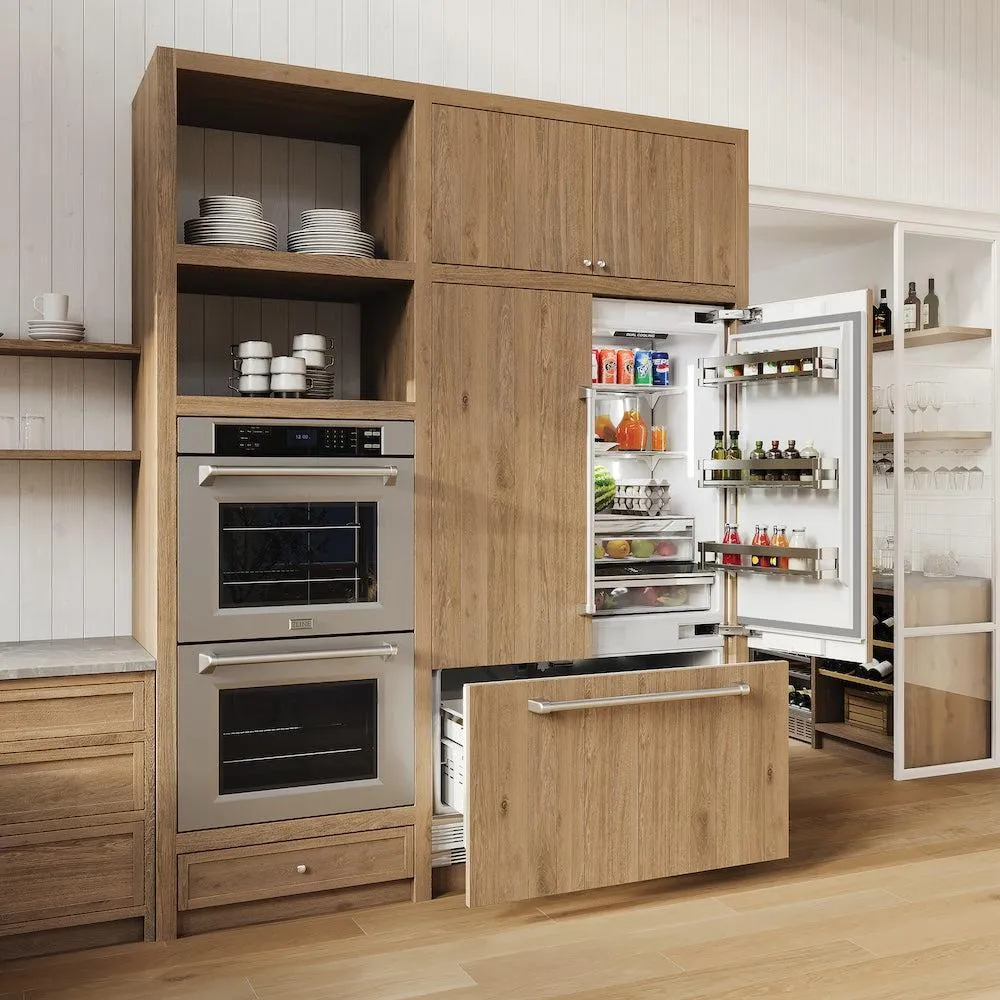
Cost drivers (relative)
| Item | Relative impact |
| Appliance price | High |
| Custom panels | Medium–High |
| Hardware (pulls/hinges) | Low–Medium |
| Cabinet modifications | Medium |
| Professional install | Medium |
Ways to manage budget
- Choose a simpler door profile and paint grade.
- Keep panel thickness within hinge limits to avoid hardware upgrades.
- Confirm your opening early to avoid site rework.
Hidden items to expect
- Delivery and haul-away.
- Door removal for tight entries.
- Electrical and water line checks if moving locations.
How to install refrigerator panels?
Panels attach to door frames or brackets. You align reveals, fasten from the rear, test swing, then add handles. Follow the model’s template for hole spacing and hinge allowances.
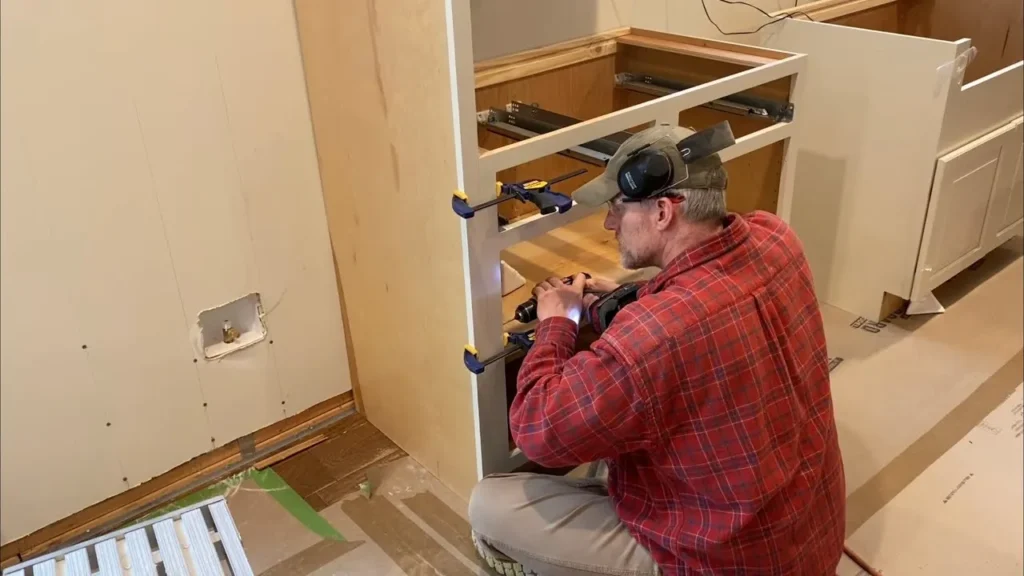
Step-by-step
- Unbox and inspect doors and panels.
- Tape templates; mark pilot holes on the panel back.
- Pre-drill and mount brackets per spec.
- Hang the panel on the door; clamp lightly.
- Check top, bottom, and side reveals.
- Tighten fasteners in a star pattern.
- Test swing and self-close; adjust hinges.
- Mount handles after final alignment.
Hinge and weight notes
Use manufacturer hinge settings for soft-close and tension. Heavy panels can change swing; adjust to prevent door drift.
Pro vs DIY
Confident DIYers can do this with two people, clamps, and patience. For integrated faces, hire a pro for perfect reveals.
How to ventilate a built-in fridge?
Fridges need airflow to shed heat. Provide intake and exhaust paths per the spec sheet. Do not box the unit tight. Keep a clear path behind or above. Use grills or toe-kick vents if the design hides openings.
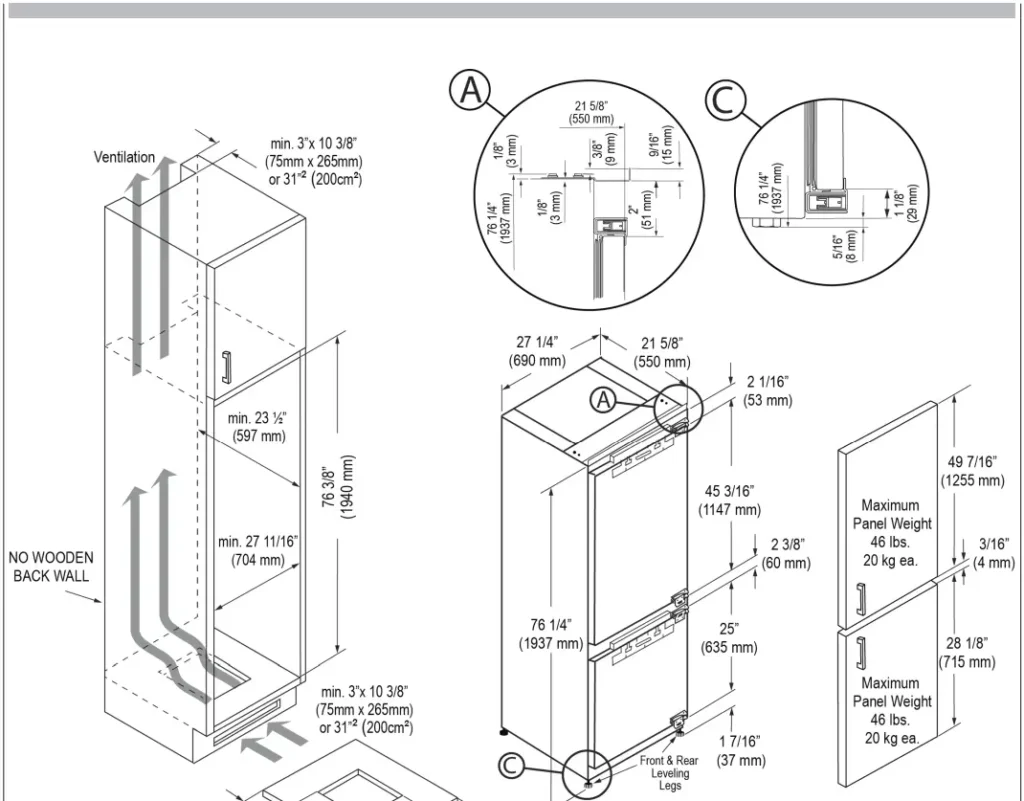
Airflow basics
- Cool air enters low.
- Warm air exits high.
- The path must not be blocked by insulation, shelves, or back panels.
Planning checklist
- Confirm the required open area for intake and exhaust.
- Keep dust screens removable.
- Avoid placing paper goods or trays in the plenum above.
Troubles you can avoid
Poor ventilation shortens compressor life and raises noise. If the cabinet warms up, increase vent area or add a discreet grille.
Can you DIY a panel-ready look?
Yes, with caution. Some owners add panels to counter-depth fridges to mimic integrated style. It will not be fully flush, but it can look tidy when done with care.
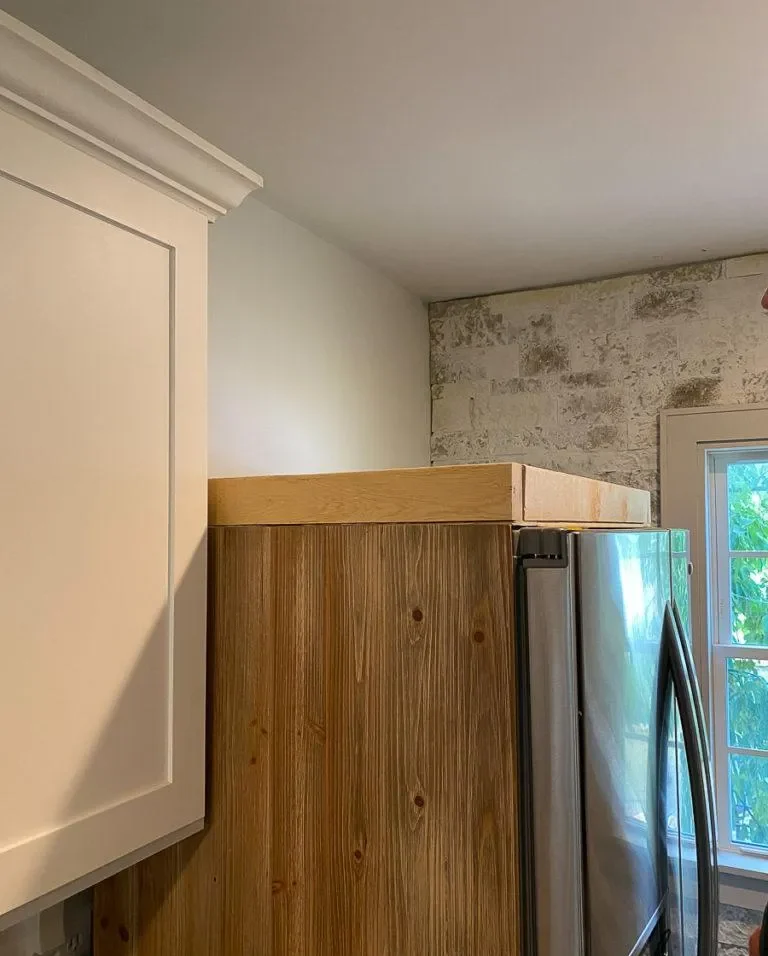
What DIY usually involves
- Building light, flat panels in paint-grade material.
- Using adhesive or bracket kits to attach panels.
- Adding handles that align with nearby doors.
Limits to accept
- Door faces may sit slightly proud.
- Weight limits are tight.
- Venting and door swing still need clearance.
Safety and service
Keep access to rollers, levelers, and water shut-offs. Do not block model/serial labels. If in doubt, stop and ask a pro.
Conclusion
Hide the box, keep the function. Plan the cabinet, airflow, and panels. The result is calm, simple, and long-lasting.
FAQ
Do panel-ready refrigerators come with panels?
Usually no. You or your cabinetmaker supply the panels, and handles are often separate. This lets the fronts match your exact doors and finish.
Can you put panels on any refrigerator?
Not on every model. Panel-ready doors accept overlay panels. Some non–built-ins can take panels, but they will not sit fully flush like integrated units.
Are panel-ready refrigerators hard to clean?
Cleaning is similar to a standard fridge. Care depends on the panel material and finish. Wipe with gentle cleaners and soft cloths to avoid scratches.
Do integrated fridges need special ventilation?
Yes. Manufacturers require clear intake and exhaust openings at the cabinet base and top to move heat away and protect the compressor. Follow the model’s ventilation specs.
Are panel-ready fridges worth it?
They can be if you want a seamless look and long-term design control. Expect extra cost for panels and install compared to visible-door models.
Can you replace refrigerator panels later?
Yes. Many systems allow panel swaps, which is useful for future style updates. Check panel thickness, weight, and mounting bracket compatibility.
Do panel-ready or integrated fridges stick out?
Integrated aims to sit fully flush with cabinets. Built-ins can sit slightly proud, even with panels, depending on the design and hinges.
Are panel-ready refrigerators counter-depth?
Most built-in and integrated designs target cabinet-depth installs so faces align. Always confirm the depth in the specification sheet for your model.

